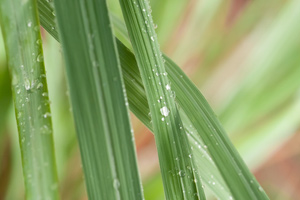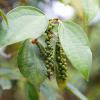What Is a “Traditional” Citronella Essential Oil?
 There are two closely related species of citronella grass that have been cultivated over the years to produce citronella essential oil; Cymbopogon nardus which is known in the oil industry as ‘Ceylon type’, and Cymbopogon winterianus known as ‘Java type’.
There are two closely related species of citronella grass that have been cultivated over the years to produce citronella essential oil; Cymbopogon nardus which is known in the oil industry as ‘Ceylon type’, and Cymbopogon winterianus known as ‘Java type’.
In the early 1900’s C. nardus was cultivated almost exclusively in Sri Lanka (formerly known as Ceylon), and C. winterianus was produced on the Indonesian island of Java. At that time, C. nardus oil was the most sought after variety but gradually C. winterianus increased in popularity due to its higher yield and slightly fresher aroma.
Today, C. nardus is cultivated organically in Nepal and Vietnam, whilst the oil of C. winterianus is becoming increasingly more difficult to source for the specialist aromatherapy market.
General description
Citronella belongs to the Gramineae (Poaceae) family and is a perennial scented grass with tall, coarse, slender, greyish green leaves that can reach a height of 1 metre (3.25 ft). Both species are swift growing and quite similar in physical appearance, and when cultivated they are seen growing in large bushy clusters.
Unlike many grasses, citronella does not spread by runners, but the bushy tussocks of grass do increase in mass as the plant matures. Since it requires a warm and humid climate with plenty of sunshine and rainfall throughout the year, citronella grass grows best in tropical and subtropical climates.
Traditional uses
This tropical fragrant grass has been employed as both a spice and a medicine for thousands of years throughout Africa, China, India and southern Asia. Infusions of citronella were taken internally to treat fevers, colds, intestinal parasites, digestive ailments, headaches and menstrual problems, and externally poultices of leaves were used for inflammation, rheumatism and infections. Modern research has shown that the oil in citronella grass is lethal to a wide range of bacteria and fungi, confirming the wisdom of those early physicians.
Of course, citronella essential oil is best known due to its reputation as an insect repellent, and in ancient times wherever it grew and mosquitoes were prevalent, the grass would be utilised to help keep them at bay. Avoiding mosquitoes meant the difference between life and death since there was no effective treatment for malaria available until quinine was discovered in the 17th century. Hardly surprising then, that this scented grass held a position of great importance as a preventative throughout the tropical regions where it was indigenous. In many 3rd world countries, it still does.
Geographical sources
Originally native to Southeast Asia, a wide range of cultivars now exist of both C. nardus, and C. winterianus. Although the non-organic cultivation of the former is still found predominantly in Sri Lanka, the latter is grown under conventional agricultural methods primarily in Brazil, China, Guatemala, Haiti, Honduras, India, Java, Madagascar and Vietnam.
Harvesting and extraction
Harvesting is usually done in the time-honoured way with a sickle, and the herbage is then allowed to partially dry for up to 24 hours to remove excess moisture. This allows better packing of the still. The citronella essential oil is extracted by steam distillation, yielding a pale yellow or golden coloured oil with a fresh, lemon-citrus fragrance with grassy and woody undertones.
Benefits of citronella essential oil
Citronella essential oil is known to be a strong inhibitor of Streptococcus pneumoniae, which apart from being responsible for pneumonia also causes meningitis, septic arthritis, peritonitis, osteomyelitis and brain abscesses. Similarly, it is quite effective in inhibiting a wide range of human pathogenic fungi, including Candida albicans, Aspergillus niger, Sporothrix schenckii and M. gypseum.
This antibacterial and antiviral action makes citronella oil extremely useful in treating colds, flu and other bacterial infections, and when used in massage it effectively eases arthritis, neuralgia, rheumatism and all types of aching muscles.
When used in skin care citronella essential oil can help with excessively oily skin, and in the same way it conditions and balances greasy hair too. Included in personal care products, citronella helps to reduce excessive perspiration, particularly when blended with cypress oil. On the nervous system, citronella oil is uplifting, refreshing and cleansing, which makes it helpful with lethargy and more severe emotional conditions such as anxiety, stress and tension.
In aromatherapy, citronella essential oil can be used as a middle to top note when blending with other oils; try it with bergamot, cedarwood virginian, cedarwood atlas, cypress, fir silver, frankincense, geranium lavender, lemon, orange bitter, pine, sandalwood and vetiver.
For extra protection against a wider range of bugs, mix citronella essential oil with lemon eucalyptus, lemongrass and cedarwood atlas, since these oils also offer protection against several species of flying beasties.
Browse Quinessence Citronella Essential Oil
Copyright © Quinessence Aromatherapy Ltd 2022.































